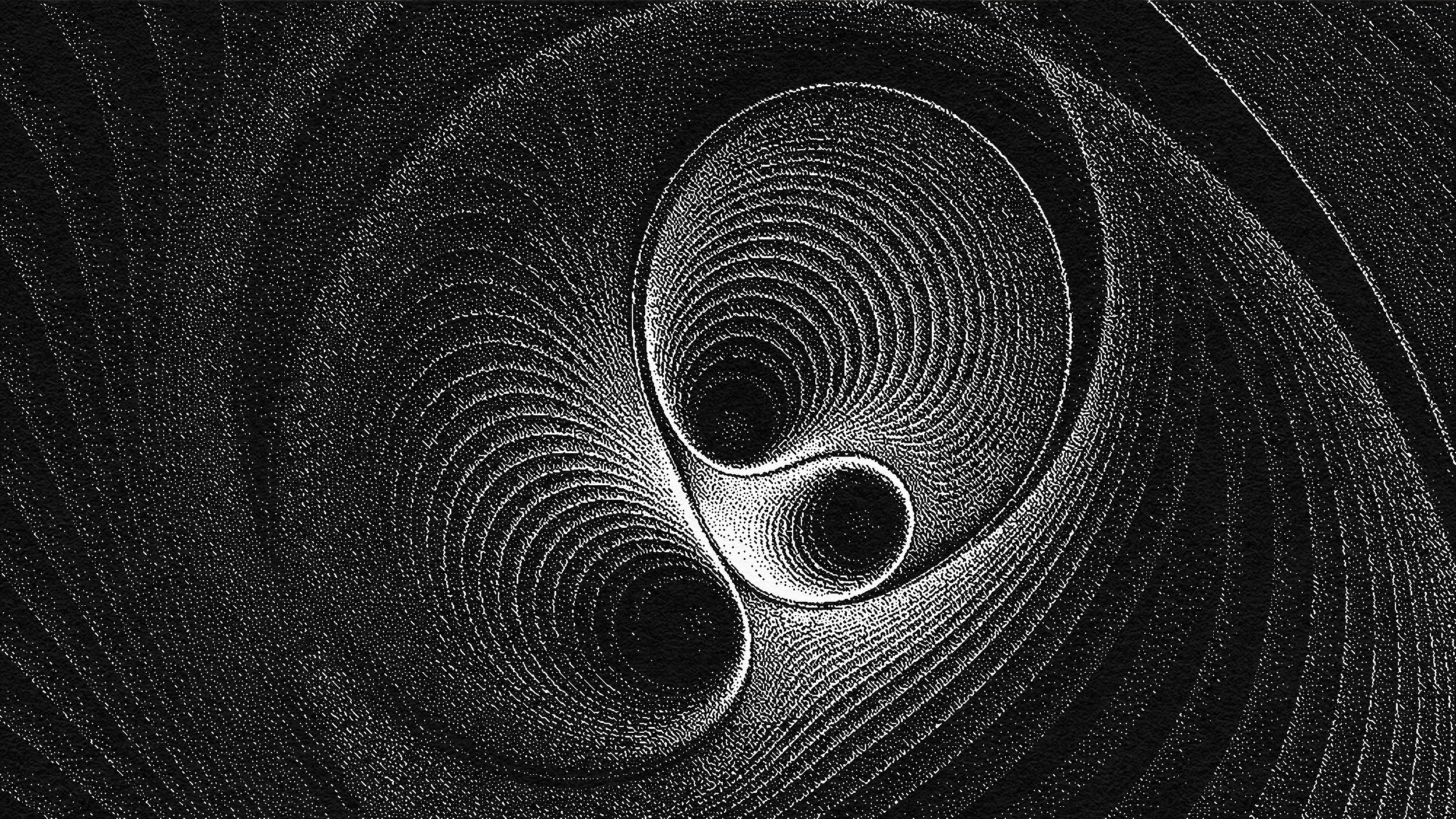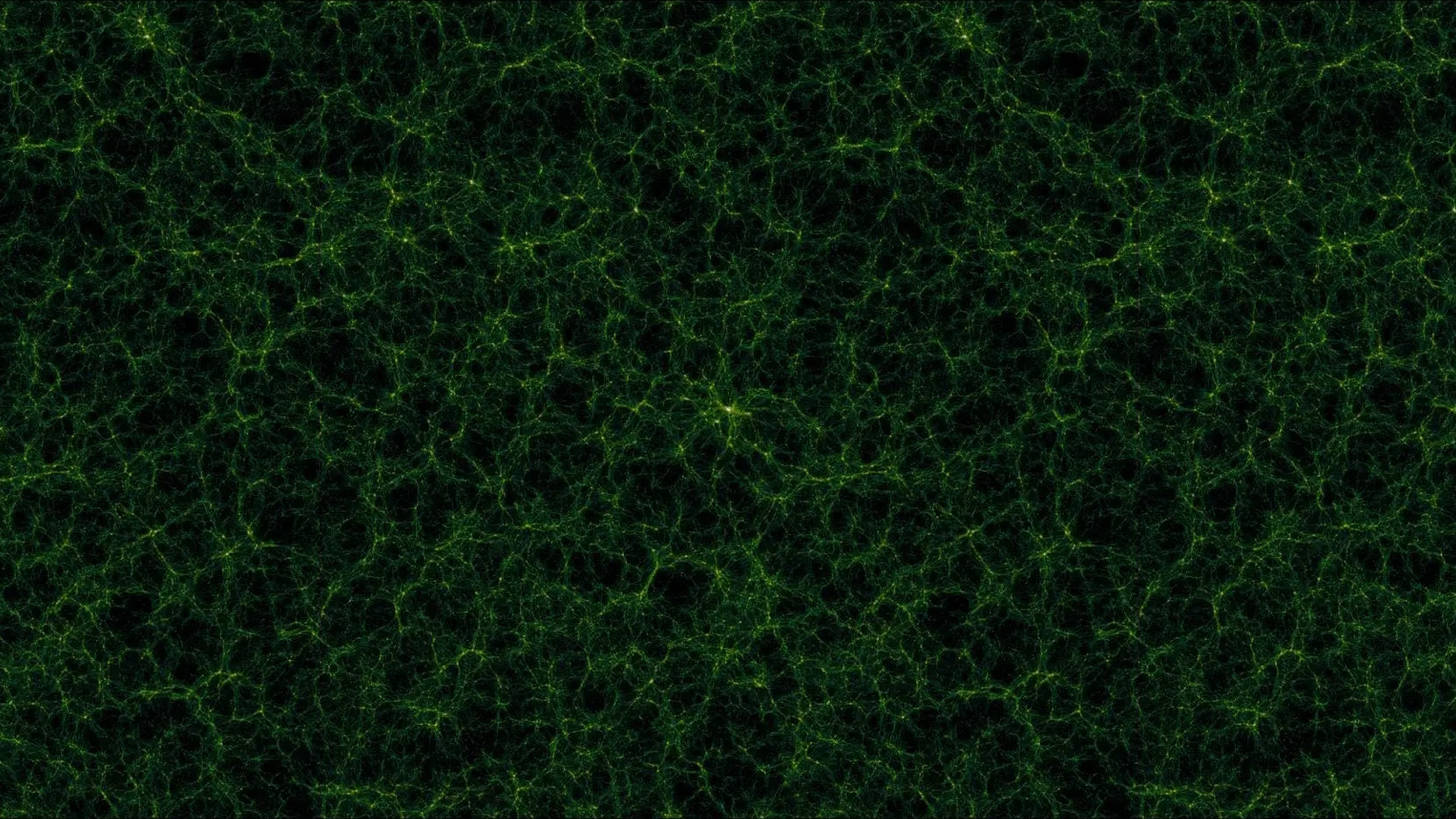Are we approaching quantum gravity all wrong?
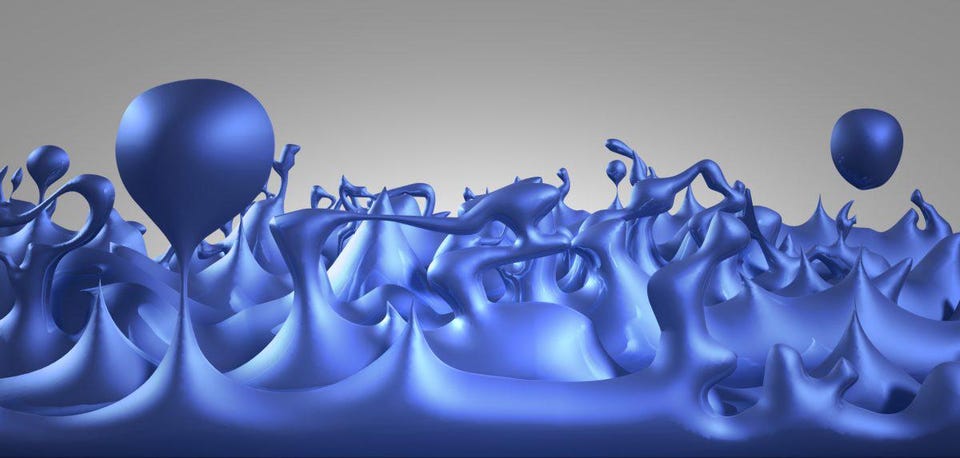
- Gravitation, governed by General Relativity, and the Standard Model, governed by quantum physics, are fundamentally incompatible.
- It’s possible, however, that the incompletenesses plaguing both theories are related, and that by completing both, together, we may discover quantum gravity.
- Lee Smolin, a pioneer in that endeavor, shares his thoughts about how we might find the best way forward to solve this conundrum.

At a fundamental level, we often assume that there are two ways of describing nature that each work well in their own regime, but that don’t seem to play well together. On the one hand, we know that the matter and energy that makes up the Universe, from stars to atoms to neutrinos to photons, all require a quantum description in order to extract their properties and behavior. The Standard Model, the pinnacle of quantum physics, works perfectly well to describe every interaction we’ve ever measured in the Universe.
On the other hand, we also have General Relativity: our theory of gravity. However, this is fundamentally a classical theory, where the presence of matter and energy curves the fabric of space, and that curved space in turn tells matter and energy how to move through it. Although each one works quite well over its own range of validity, there are plenty of questions that require a thorough knowledge of both, together to answer. Due not only to their fundamental differences but their fundamental incompatibilities, many questions that we can imagine are currently beyond our ability to answer.
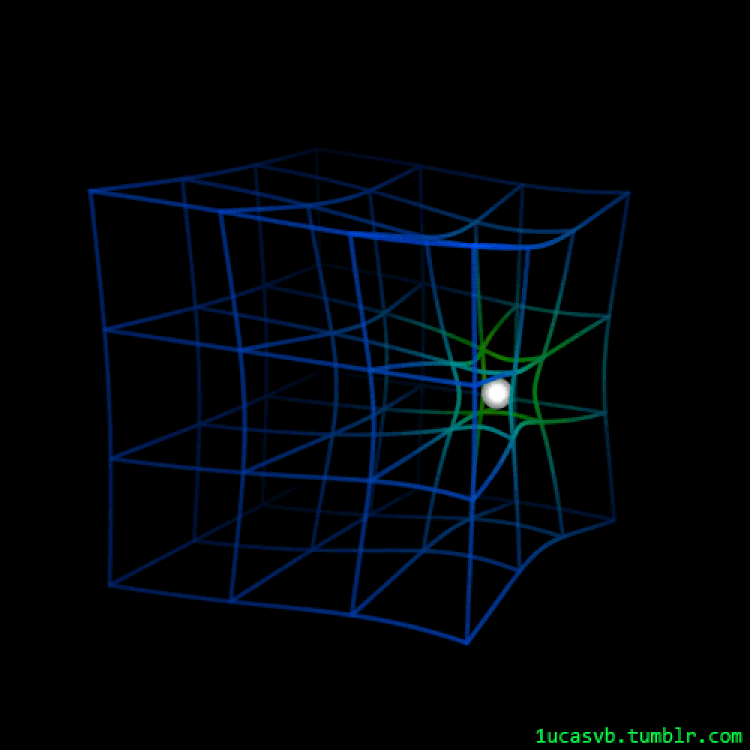
That doesn’t necessarily imply that anything is broken with physics, but it certainly seems to indicate that our current understanding of matters is, at the very least, incomplete. In an attempt to uncover just what it is that we know, what we don’t, and what the path forward might look like, I sat down in an interview with physicist Lee Smolin, who’ll be appearing at the HowTheLightGetsIn festival in London this September 18 and 19. Lee is a pioneer in the field of quantum gravity and someone whose latest book, Einstein’s Unfinished Revolution, details the search for what lies beyond what’s presently known about the quantum Universe.
Ethan Siegel: What are the motivations behind why you would say quantum field theory and the Standard Model, and General Relativity for gravity, why can that not describe the Universe at a fundamental level?
Lee Smolin: Well it just can’t. It’s easy to think of experiments that that collection of ideas doesn’t give consistent predictions for. More than that, there are reasons, in principle, why the principles that quantum physics is based on contradict the principles that General Relativity is based on, and we need to make these things fit together on a level of principle, because it’s supposed to be a fundamental theory of nature.
There are both experimental reasons and reasons of principle — and between them there are also lots of technical problems that we see when we get to know them — are a consequence of these conceptual clashes: clashes of principle.
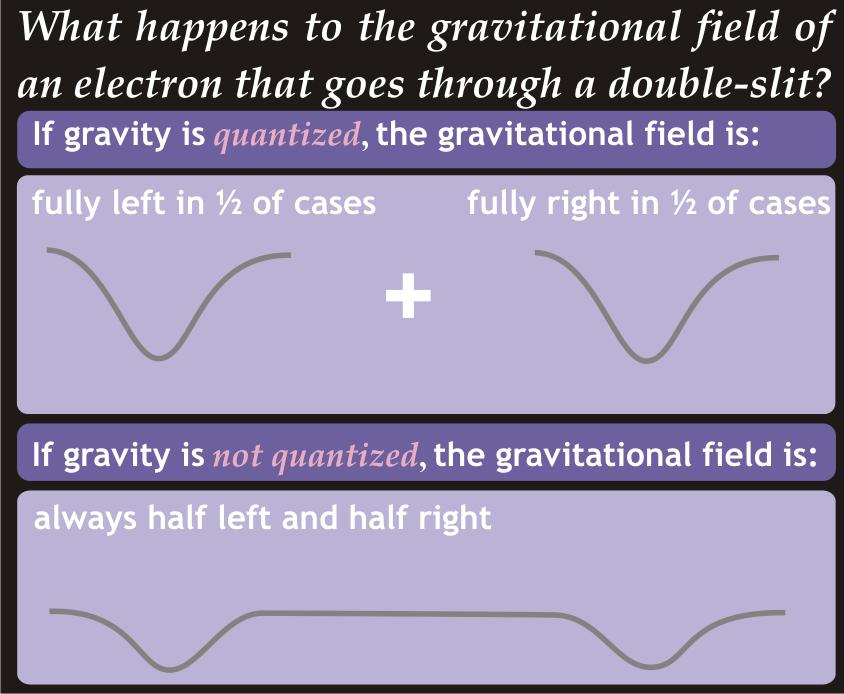
ES: Can you give one example?
LS: Sure, what does “collapse of the wavefunction,” which is a part of quantum mechanics, look like in a spacetime which is dynamical, and which evolves according to some equations of motion in General Relativity?
ES: Einstein’s original idea of unification was originally to geometrically add in classical electromagnetism to General Relativity, and we know that can’t be right because we know the Universe is quantum mechanical in nature. You write about what you call “Einstein’s unfinished dream.” Why is this dream important, even if Einstein’s original ideas about it are no longer relevant?
LS: Well, I disagree with you about how relevant Einstein’s original ideas were, for better or for worse. There are, in the history of science revolutions, where our understanding of nature changes profoundly and on every possible scale. When you go from being an Aristotelian scientist to a Newtonian scientist, your picture of the world changed drastically, on all scales, and there are many applications of that.
Here’s what at stake. Einstein started two revolutions at the start of the 20th century: general relativity and quantum mechanics. He understood that they did not give a consistent picture put together. And in fact, he believed, and I agree with him, that quantum mechanics all by itself doesn’t give a consistent picture. To put it directly, it just doesn’t make sense: the quantum mechanics as it was formulated in the 1920s, by his friends and colleagues.
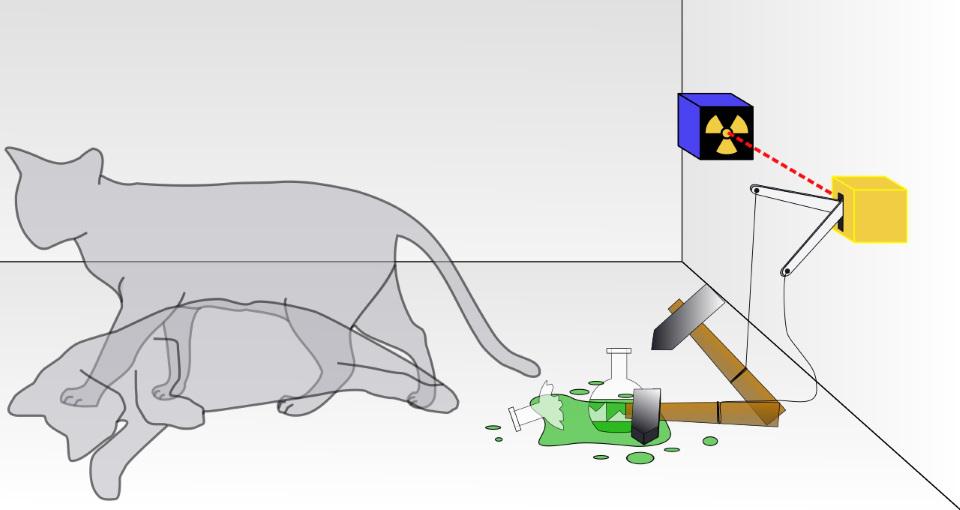
LS: So we have two tasks on the agenda. One is to make sense of quantum mechanics. And two is to fix that theory which is better than quantum mechanics, and to make that theory that’s better than quantum mechanics also complete General Relativity. So I see it as a question of completion.
General Relativity covers very well, to a certain degree of approximation, certain phenomena. Quantum mechanics covers very well, to a certain degree of approximation, certain phenomena. They’re both incomplete. Highly incomplete. At the level of experiments, you have to use some imagination, but it’s not all down at the Planck scale. There are experiments which involve timescales of minutes or seconds where we have no clear prediction. But this double revolution needs to be completed on both sides, and that’s what’s at stake: it’s to complete the revolution, because we’re living in a conceptual situation much analogous to that faced by Kepler and Galileo, who were contemporaries, they were each halfway between Aristotelian and Newtonian physics. They understood certain things very well, but they were deeply confused about other things. And that’s our situation now.
ES: From the quantum side, I’ve heard many people argue, counter to what you’re arguing, that quantum physics works exactly fine for describing every quantum phenomenon in the Universe, so long as you don’t also fold in quantum gravitational effects. If I can treat spacetime as being a classical or semi-classical background, then I can do everything that my quantum field theory predicts I should do without any errors or uncertainties. Do you disagree with that?
LS: Am I supposed to be impressed by that?
Aristotle worked with orbits and the positions of the planets that were accurate to a part in a thousand over a millennium. That was impressive, but it was bloody wrong. That simple-minded theory that you’re describing… why would somebody take such a little, little, low-ambitious thing? Of course you can make it work if you put in enough caveats and enough approximations, that’s what we’re trained to do.
And there are some beautiful things that come out of it, like Steve Hawking’s prediction of black hole radiation. So that’s fine, but man, that’s 1970s physics; do we want to do 1970s physics forever? I’m being deliberately a bit provocative, but, you know, we’ve got to wake these people up!
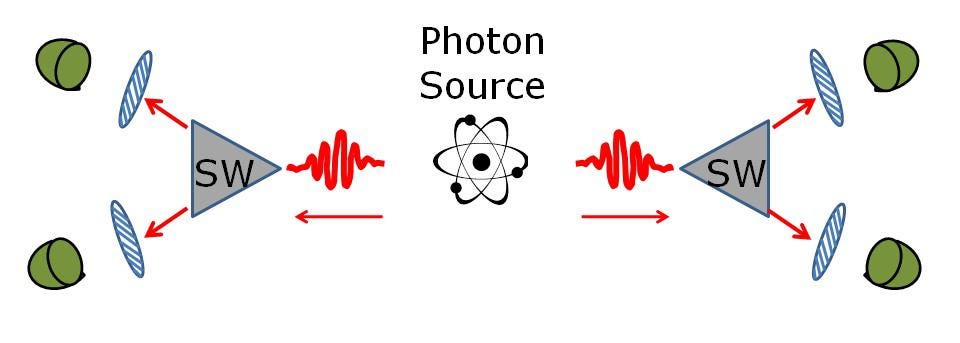
Credit: Chad Orzel
ES: So I read, back in 2003, you co-wrote a paper [with Fotini Markopoulou] that showed what I’ll say is an intriguing link between general ideas in quantum gravity and the fundamental non-locality of quantum physics. Now, maybe I should even ask you a setup question for this: we often state that quantum physics is fundamentally a non-local theory. And when we talk about quantum entanglement, we use that as sort of an illustration of that. But critics of that will say that no information ever travels faster than light from one quantum to another. Does this create any conflict in your mind? Would you say that quantum mechanics is fundamentally non-local?
LS: That quantum mechanics is fundamentally non-local, and therefore, making sense of quantum mechanics requires a strong modification in our understanding of what space is. And that General Relativity requires a strong modification in our ideas of what space is. And therefore, the things should go together. We shouldn’t try to ignore that and do this and then ignore this and do that, we should fix them together, in one move. And that’s what I’ve been trying to do since 19… since I was in college.
That [paper], that was mostly [Markopoulou’s] idea, and that was a very clever demonstration of the principle that space could be is be emergent, so that time could be fundamental. And that’s what she believed and she convinced me, and that’s what I’ve been working on, really, the last 20 years. Is the idea that time and causation are at the bottom, and are fundamental, and that space is a secondary, emergent quantity, like pressure of the air or temperature of the Earth. And so that’s what we’ve been trying to do, and we’ve been having some moderate success along the road.
So that what we experience of the world, evolving in time event-by-event, event-by-event, is real, that’s how the world really is. And out of that fundamental, active notion of time and causation, we make space as a derivative concept, the same way that out of the motion of atoms, you make a gas.
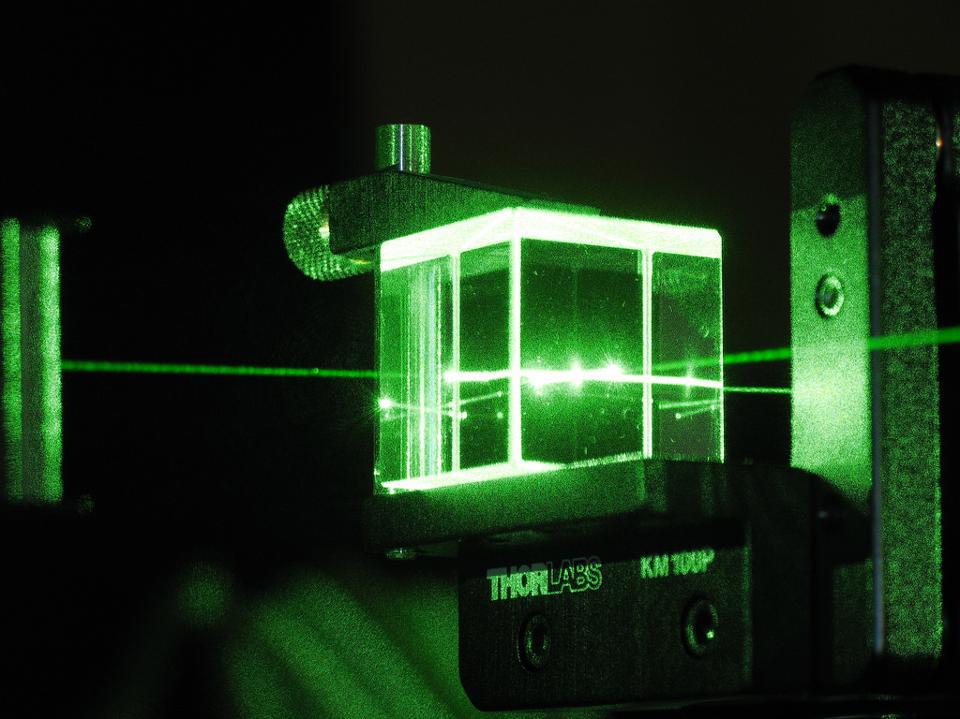
ES: Interesting. So you are very strongly an advocate that this classical notion of cause-and-effect, persists all the way down to the quantum level. I would assume that this means you are not a fan of quantum mechanics interpretations that do not maintain cause-and-effect as a fundamental tenet of all interactions?
LS: Mmm-hmmm, yes.
ES: I know that you have stated, and I don’t know if it’s for ideological or physical reasons, that reality ought to be independent of us, the observer.
LS: Yes, of course.
ES: You say, “yes, of course.” And many people throughout the history of quantum mechanics have not thought, “yes, of course.” Can you explain why reality should be independent of the observer?
LS: Because I’m a realist, and for me the goal of science is precisely the description of nature as it would be in our absence. Now, that doesn’t mean that there isn’t a role for the observer. For example, in the theories I’ve been developing for the last five years — it’s called the theory of views — what is real in that Universe is a view of that Universe, looking back, causally, into the past. And that’s exactly what’s real. John Bell, who was very much a realist, used to say, “we have to say not what the observables are, but what the viewables are.” So I’ve been developing this theory where we have events, and then have information or news that comes to them from the past, and that’s what’s real: those views. And the dynamics of the world doesn’t depend on differential equations in space, or fields, it depends on the views, and the differences between those views. And the basic dynamical principle of the theory is that the Universe evolves to make the views as varied and as different from each other as possible.
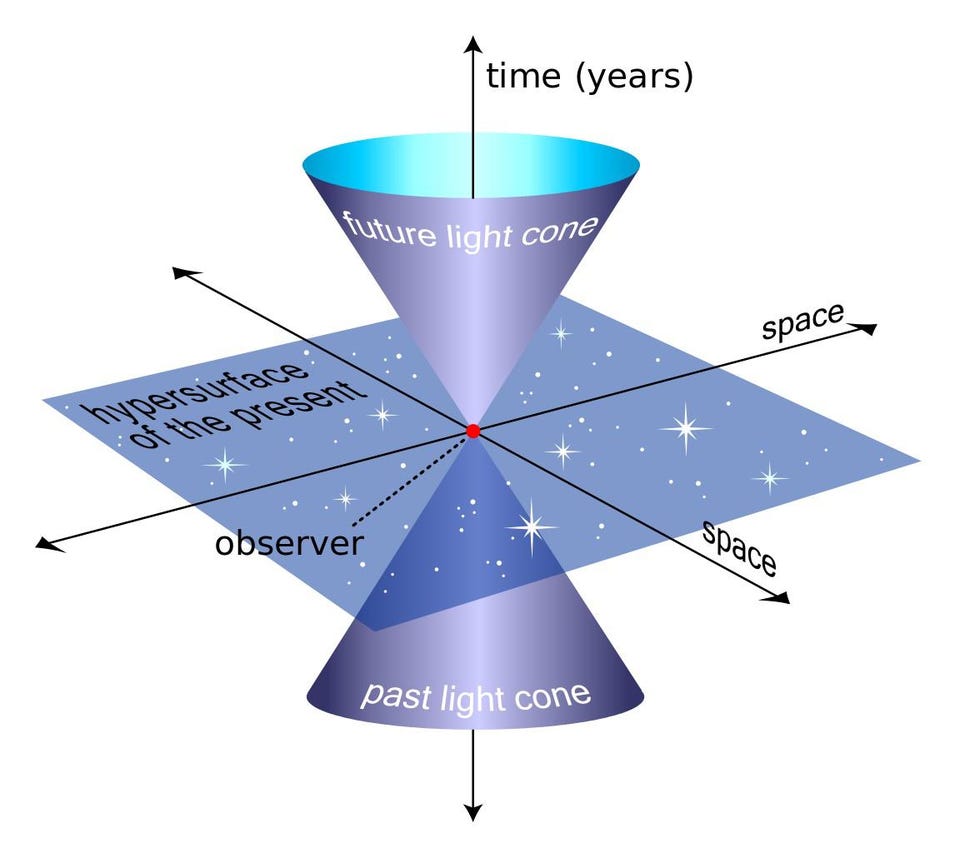
ES: So you have a principle, then, of something that’s either maximized or minimized.
LS: Of course.
ES: Is that something you could describe for us?
LS: Sure. It’s called, “the variety.” It can be applied to many different kinds of systems, so let’s take cities. Consider an old city: the center of Rome, which was preserved. Think of calling a friend and saying, “I’m lost, I’m at some corner and here’s what I see around me.” Now, Rome is a city with a lot of variety, so your friend is gonna be able to say, “Oh, you’re there, near the [whatever] because every corner looks different.” Rome is a city with high variety. On the other hand, there are some very suburban-dominated cities, in which you wouldn’t know very much about where you are just from what you see when you look around, because many of the corners are similar to each other. So that can give you an example of what we mean when we say, “we want to increase the variety.”
ES: So when you say, “we want to increase the variety,” do you think that nature extremizes variety?
LS: Yes, and I can write that down as an equation within the framework I discussed, where there are these causal relations, and there’s energy and momentum, but there’s no space. We can construct a dynamical theory that extremizes, over time, the variety of the system. And we derive from that, quantum mechanics, and as a limit of that, classical mechanics.
Why do we get quantum mechanics out? Roughly speaking, there was an original realist interpretation of quantum mechanics called pilot wave theory, that Louis de Broglie invented in 1927, and it was reinvented by David Bohm in about 1952. And in that theory, there’s potential energy and there’s another new function of the wavefunction, and it sits where the potential energy usually sits. And they derive the Schrodinger equation from maximizing the influence of this function. Well, it turns out that this function that David Bohm invented is a certain limit of the quantity we call the variety, by the way with Julian Barbour, back in the ‘80s. And this was one of the great surprises of my working life.
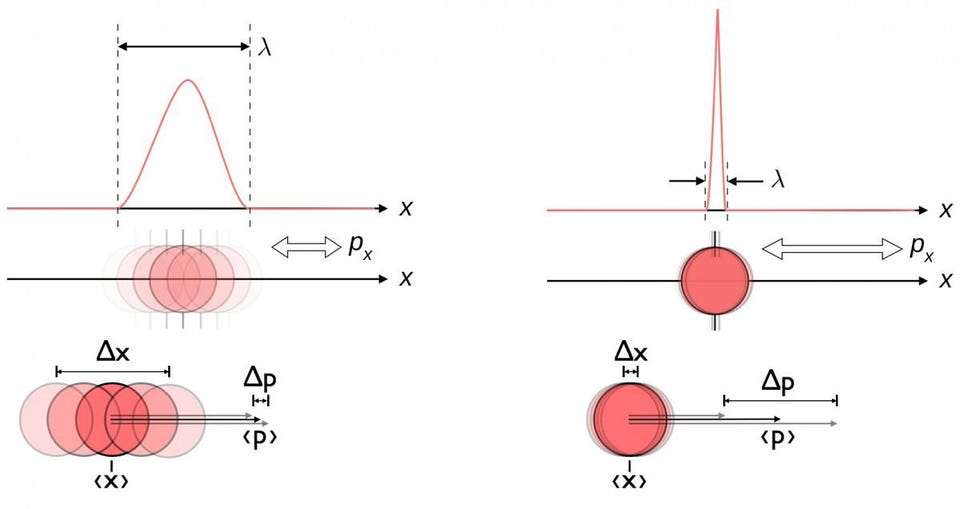
Credit: Maschen/Wikimedia Commons
ES: When you take this limit of the quantity you call the variety, and you’re saying, “we’re extremizing over that,” this sounds to me like something that would be pretty analogous to some type of entropy, some type of thermodynamic quantity. So far, everyone I know who’s tried to come up with a concept of “gravity is emergent” or “space is emergent” or some other quantity that we normally look at as fundamental is in fact emergent, takes something that in typical physics thought we view as emergent and makes that fundamental. I would say the typical view of physics is that entropy is an emergent property that you can calculate based on, say, the microscopic quantum state of all the particles aggregated together. Are you basically doing something similar to that, except with this thing you define as “variety” instead of entropy?
LS: Roughly speaking yes, but that’s a long discussion. Because the role of entropy in cosmological theory is something we have to get our heads straight about. There’s a series of three very beautiful papers that Marina Cortês, Andrew Liddle and Stu Kauffman have that we’ve been working on for a few years, and they contain some important new insights about very far-from-equilibrium systems and their relation to cosmology.
ES: I’d like to ask about this idea that Heisenberg and a lot of other people had, which is that unless you have what we call an interaction in some sense — one quantum interacting with another quantum — that’s the only thing that provides meaningful information about the Universe. If you don’t make a measurement, then you don’t have a quantifiable property of the Universe. So all of the information that we have has to come out of that act, which I look at, maybe naively, as fundamentally antagonistic to this idea of an objective reality. The fact that we can’t make any measurements that discern between this Heisenberg-esque picture of reality and a “objective reality exists” picture of reality… you have a certainty about your perspective that I don’t share and that many physicists don’t share. How do you make sense of this if you can’t tell experimentally between these different interpretations?
LS: No, that’s a fake. I don’t know that, but it’s a good working fake. Let me tell you about how I look at quantum mechanics these days, because it’s new and it’s been very exciting to me. Our realization, actually following down some quotes of Heisenberg which were very mysterious at first, you know that Heisenberg said that the wavefunction description does not apply to the past. Somehow, the wavefunction was about the future, and the classical description is about the past. And a few people said this. Freeman Dyson said this at length; Schrodinger said something like that, and even deeper and more mysterious.

Credit: David Koryagin/Wikimedia Commons
Recently I’ve been working on these questions with Clelia Verde, and we realized they were trying to say is that in the Copenhagen version of quantum mechanics, there is a quantum world and there is a classical world, and a boundary between them: when things become definite. When things that are indefinite in the quantum world become definite. And what they’re trying to say is that is the fundamental thing that happens in nature, when things that are indefinite become definite. And that’s what “now” is. The moment now, the present moment, that all these people say is missing from science and missing from physics, that is the transition from indefinite to definite. And quantum mechanics, the wavefunction, is a description of the future which is indefinite and incomplete. And classical physics is how we describe the past.
Why? Because the past happened, what happened was definite, and it doesn’t change, because it’s the past. So we have this different way of thinking about quantum mechanics, and it seems to be helpful, we’re having a good time.
ES: It’s very hard to disagree with that. So when you look at, let’s say, Wheeler’s delayed choice experiment. And I’m thinking in particular of one where you send in a photon and you have a beam splitter, and the photon can take two paths around mirrors, and they’ll meet up on the other side. And either you’ll have another beam splitter that will combine them and you’ll get your detector that will see an interference pattern of the recombined photons, or you won’t put the splitter in there, and you’ll just get one of the photons that comes into your detector.
So, you can do this, and Wheeler’s idea is that you can send the photon through that first splitter, to have it go those two different ways. And then you can either put the second splitter there or not. And at the last second, you can either remove the splitter that was there (or not) or you can insert the splitter that wasn’t there to try and, he called it, “catch the photon deciding on what it was going to do before you made that measurement.”
In hindsight, to no one’s surprise, what did you measure at the detector? Well, if the splitter was there, you get the interference pattern back. And if the splitter wasn’t there, you’d just get the one photon back. Basically, nature doesn’t know in advance what you’re going to do. But once you do it, it’s like it knew all along what you were going to do. That, to me, and you’re going to tell me that’s not the only interpretation, has always meant the act of interacting, itself, is what gives you that meaningful information. If you didn’t have any interactions taking place, you have not determined your reality yet. Your reality remains indeterminate until you make a measurement that would discern between the different possibilities.
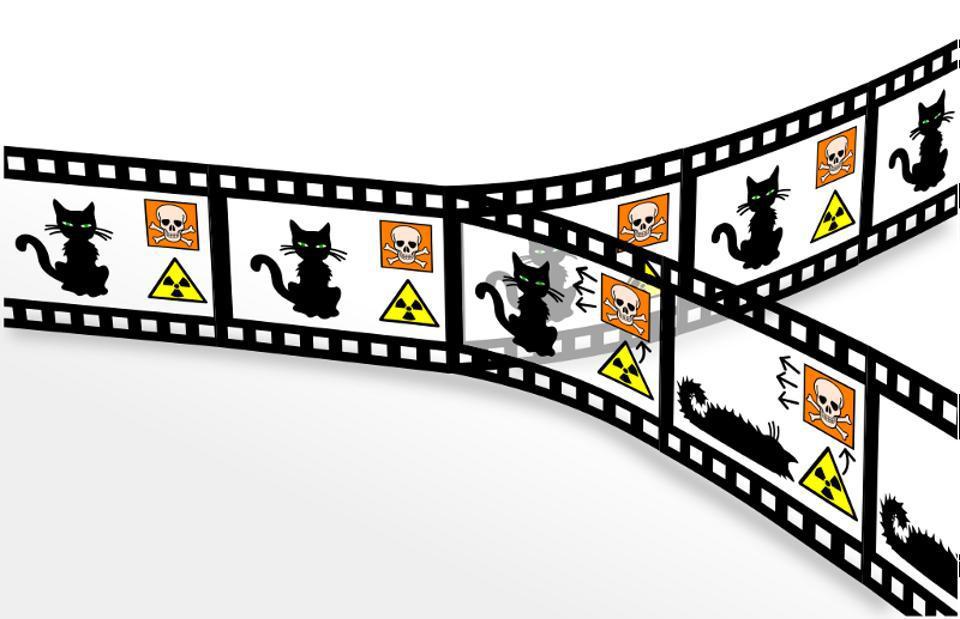
LS: Yeah, but you see, I agree with that. Only, our line is “now,” is the boundary between the future and the past.
ES: Are you saying that right now, the “in progress” things, that have not yet been decided, that will be decided with an interaction at some point in the future, are you saying that everything in the past has already been determined, even those things where that measurement that will draw that line has not yet occurred?
LS: So that event has not yet occurred, so that’s rather compatible. The notion of the “now” that gives rise to is not a thin instant, where it has to happen here; it’s what the philosophers call a thick now. So there can be events that turn something definite, that are late, or that are early, so our “now” can zigzag quite a bit. At least, that’s the way we try to understand those cases. They’re not in the original papers with Verde, but we’re going through all these thought experiments in detail and show how to think about what’s going on.
ES: This is stuff that’s right on the cutting edge of trying to understand what the fundamental nature of reality is. You’ve written very much, I’d say, non-positively about many of the ideas in string theory, and how they’ve become this dominant theoretical paradigm. One of the things I’ve noticed about your work is that it seems to be relatively agnostic about other extensions to what might be out there: string theory, supersymmetry, grand unification, etc., you seem pretty agnostic about this all, which is maybe in contrast to what people’s public perception of you is.
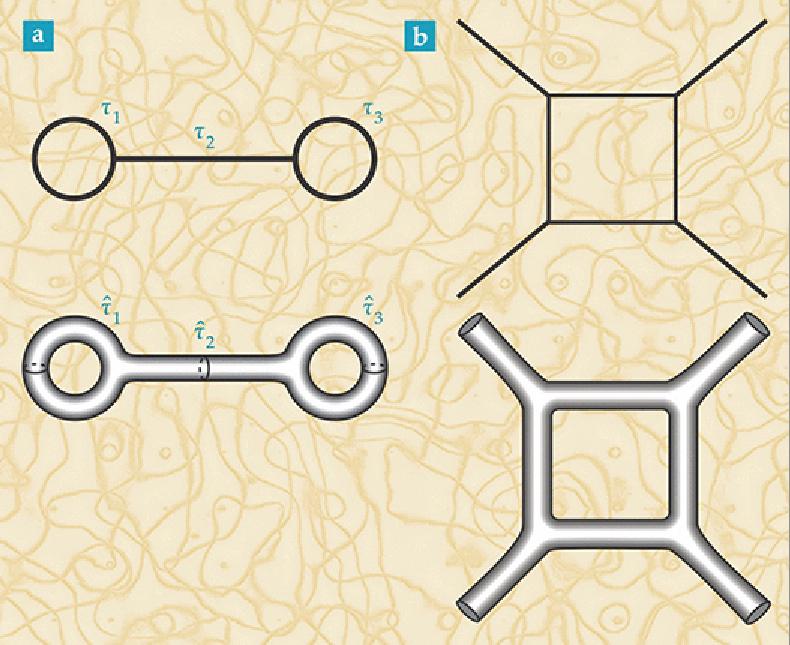
LS: If people want to express an opinion about [my 2006 book, The Trouble With Physics], I would ask them the favor that they should read it. There was a lot of angst and conflict in that period, and I think people would be surprised here, but let me just tell you what I think. What I believe is that there are a number of interesting different approaches to quantum gravity, which so far are all incomplete. They all manage to explain something to us about what a quantum description of spacetime may be, but each of them also get stuck somewhere on some characteristic.
String theory is a beautiful set of ideas, which in my view has gotten stuck. And loop quantum gravity, which I’m fortunate enough to have had the experience of working on while it was being invented, but it’s also clearly gotten stuck. Both of them express the same idea: that there’s a duality between fields carrying forces, like the electromagnetic field, and quantum excitations of those fields can look like extended objects, like strings or loops, propagating. Both loop quantum gravity and string theory express in different contexts that fundamental conjecture.
What I tried to express in that book, and it’s always the author’s fault when you’re misunderstood, that book started as a case study of the role of conflict in science. Being a student of Paul Feyerabend, I think that conflict and disagreement are vital to the progress of science. And that book was meant to be an argument for that, using the case study that I knew best. As the book got shaped by me and by the editors, we flipped the book so that the case study came first and the analysis in terms of how the conflict plays a driving role in science came second, and most people only read the first half.
What I was against, and what I am against wherever I see it, is premature dogmatism: premature believing in something more than what the evidence supports. And this, unfortunately, is very common in science, because we all want to believe that we’ve done something good and discovered something. There was an atmosphere at the time, which I think is very dissipated now, of over-optimism in my view. I try to give a balanced view of what the strengths of string theory were and what the weaknesses were, and unfortunately some people reacted to that. But that was a long time ago.
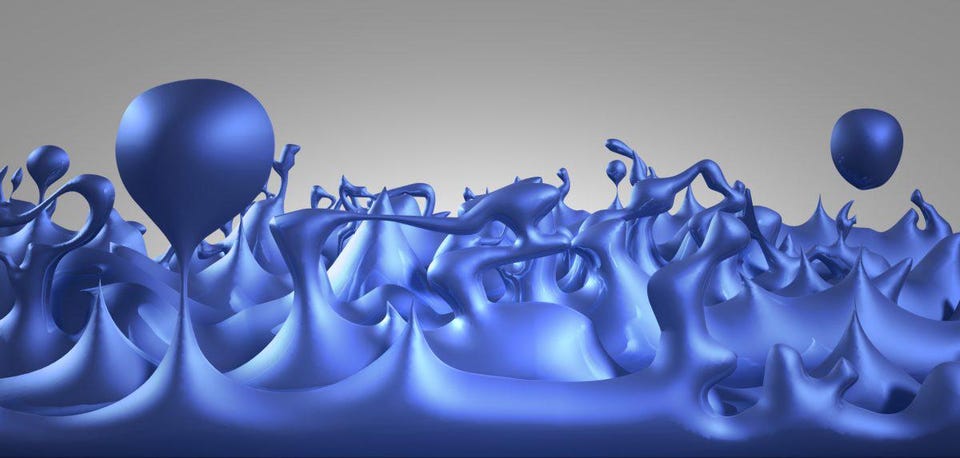
ES: Can I ask you what you think of certain effective approaches to quantum gravity? Like asymptotically safe gravity, do you think that offers any promise? I’ve always had an appreciation for that one because it seems to allow for predictions to be made in an otherwise inaccessible regime.
LS: Asymptotic safety has some very attractive points. It’s basically an application by Steve Weinberg about some ideas about perturbatively non-renormalizable theories that Ken Wilson had, and he applied their ideas to gravity. It’s a very attractive story, but there’s a problem; as I said there’s always a problem. The problem in asymptotic safety is unitarity. We know of an asymptotically safe theory which is present even in perturbation theory. Can we speak a little math here?
ES: Go ahead, I’ll translate.
LS: The action principle to the theory is the Einstein action principle, plus the cosmological constant term, plus a term in the Ricci scalar squared plus a term in the Ricci tensor squared. And this last one invariably introduces instabilities and an impossibility to satisfy the principle of unitarity, which among other things means you can’t guarantee that the probabilities for all the things that will happen will add up to one. And this has been a known problem since 1978 or 1982 or something, and I wrote the third paper in response to Steve’s paper that showed the violation of unitarity. So that’s where it stands in my mind, but it’s always good to follow the kids, and there’s a bunch of smart, young people working on this. It’s not my bet, but it’s their bet, and they’re really good.
We don’t have any senior faculty working on asymptotic safety at Perimeter, but we were so impressed by some of the young people who applied to us that, despite our own misgivings, we hired them for a few years. Because it’s interesting and exciting to have them around, and if you want your field to prosper, you’ve got to be able to listen to and promote young people who disagree with you, otherwise it’s not science.
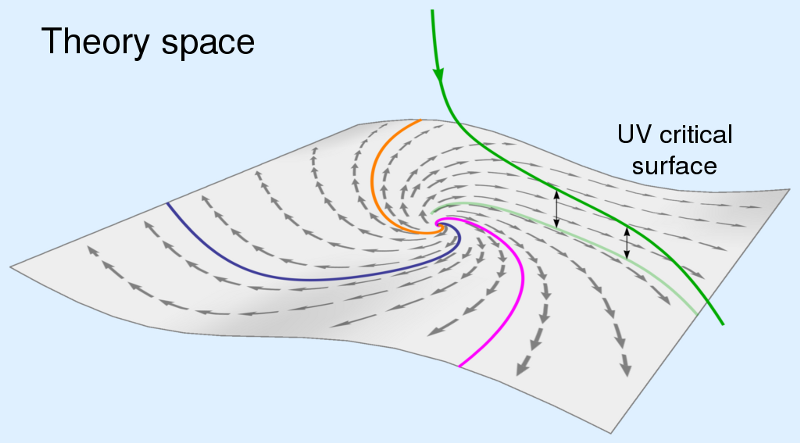
ES: When I’ve felt optimistic about it, I’ve looked towards asymptotically safe gravity in the same way I now look back at the time-dependent Schrodinger equation. I say, “okay, look, this has cases where it doesn’t apply, and cases where it breaks down,” because it’s not a relativistically invariant theory. But if you can find a formulation of it, like the Dirac equation, that is relativistically invariant, or if you could find a more general formulation, like quantum field theory that eliminates the need for that sort of thing. Maybe this idea can be salvaged, despite the fact that the way it’s formulated now, it doesn’t guarantee unitarity.
LS: But if you turn it up so that it is giving you unitary answers to second or third order in perturbation theory, then the condition that there should be a non-trivial fixed point constrains the top quark mass by a measurable amount. They actually get a prediction that if this all works out, then here’s the top quark mass.
ES: I remember reading a paper by Wetterich and Shaposhnikov years before they had measured the mass of the Higgs boson where they used the mass of all the particles except the Higgs to say, well, instead of getting the mass of the top we’re going to get the mass of the Higgs, and the value they got was ~126 ± 1. But if I remember right, since then, the mass of the top has changed a little bit, and now if you put that same math back in, you’d get something like 129 or 130, which doesn’t agree with what they’ve seen at the LHC.
LS: I didn’t know that; that’s interesting. That’s great. What else excites you?
ES: One thing I’d like to press you on a little bit is this: if you have a dynamical spacetime, versus a static spacetime, how can you describe wavefunction collapse in a changing spacetime? If you have a wavefunction in a changing spacetime, what does wavefunction collapse look like, if your spacetime isn’t static?
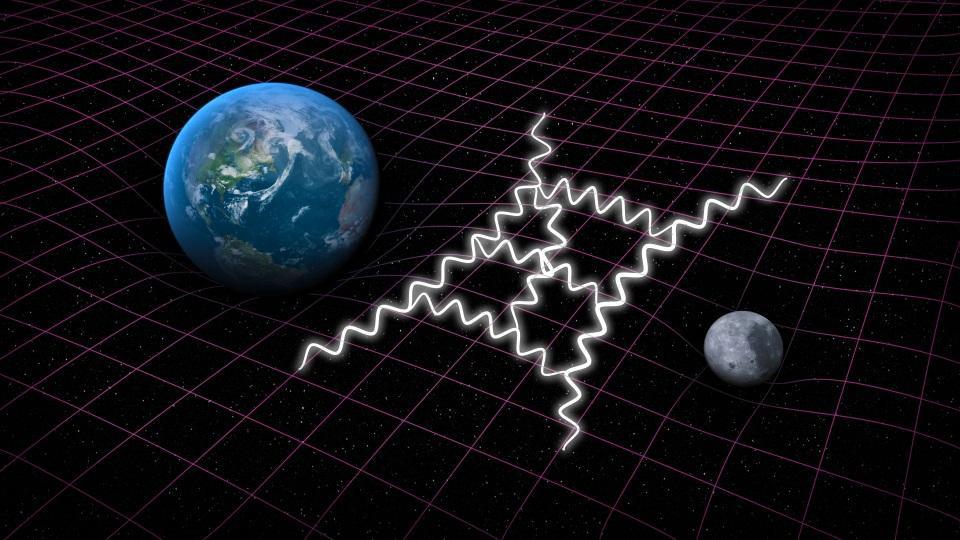
LS: Roger Penrose’s view of that is that the collapse of the wavefunction is a physical thing that happens when a certain measure of energy involved in that possible event is equal to the planck energy per planck time, or something like that. I don’t remember the exact way he did it. So then, you’re in a domain where neither the Einstein equation or the Schrodinger equation is quite right.
What I’m really, really excited about is that there are some experiments under development where they actually test that. There’s a whole new generation of tabletop gravity or quantum gravity experiments that different people are working on.
ES: I like the tabletop experiments that are happening. One thing that I definitely wanted to ask you about is, you’ve talked, I’ll say derisively about people who treat conclusions as if they’re foregone conclusions without having evidence to back that up. You want to remain open-minded to anything that may be possible before that critical evidence comes in. Do you worry that taking the stance of saying, “I am a realist when it comes to quantum physics” is violating that piece of advice. Do you worry about saying, I’m a realist and I believe that reality is observer-independent is making that mistake?
LS: <laughs> You know, I don’t know what’s wrong with me, but I love this stuff to death. I am having so much fun and there’s nothing like it to be able to think about this stuff. Some people have this wire in them that says they have to be right, and I don’t have that. I don’t know why, maybe it’s a defect? So, sure, if you ask me, yeah, I could be wrong about that. I could be wrong about a lot of things.
Let’s put us 1000 years in the future, we’ll all look like fools for having missed the obvious things in neuroscience or planetary science or something that turned out to be important. There was a famous boxer who was asked how he felt about his career, and he said, “you know, I did the best I could with what I was given.” And I’m happy with that. I don’t gotta be right, but if I didn’t follow what I believe in, I wouldn’t be as happy a person now.
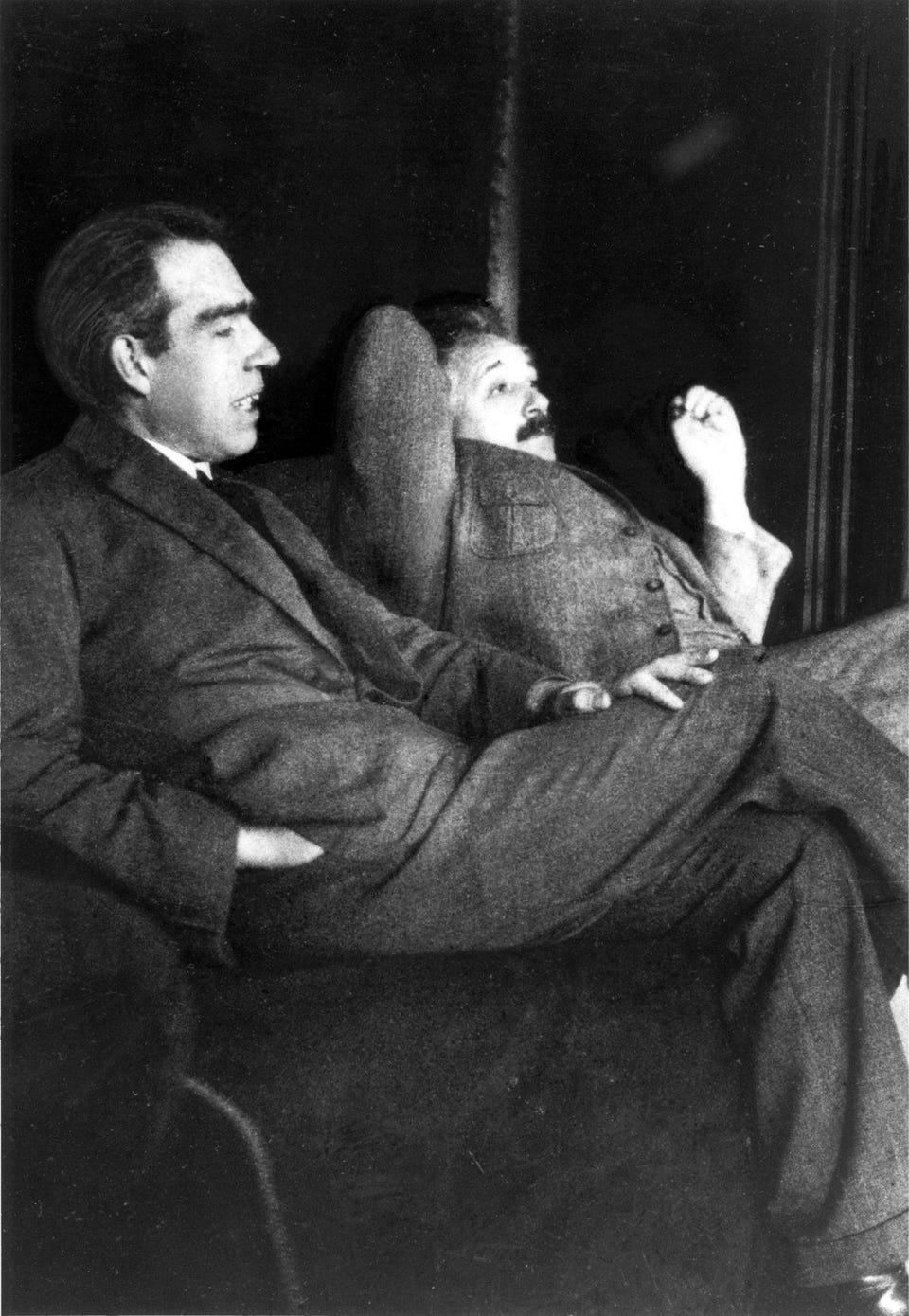
ES: I want to pull out a Niels Bohr quote and ask you your opinion of this, then. “When we measure something, we are forcing an undetermined, undefined world to assume an experimental value. We are not measuring the world; we are creating it.” This strikes me as a statement that I would expect you to fundamentally disagree with, but you might surprise me.
LS: No, it doesn’t appeal to me, but wow, I’m really sorry I never got to meet Bohr. He was an interesting guy; can’t we just be on that level? In the end, Bohr was at a very weird place from our point of view in the development of western culture and society. He was influenced by Schopenhauer and people like that, and so he had what we would consider not just a non-realist viewpoint, but a radical non-realist viewpoint, and he did the best he could with that. But I don’t believe that, that doesn’t keep me up at night, but… sure.
ES: Do you have any thoughts you’d like to share that I haven’t asked you about that you think are too important to not share?
LS: Open up the scientific community to more people who are highly trained and really good. And maybe I’m just getting this in because I like these ideas. For me, when people talk about diversity, that means not just women and blacks and aboriginals and who else, those are all very very important, but also very important are people who think differently. Now, to make a success in physics, you can’t just be anyone off the streets, it’s like I couldn’t compose a piece of music and send it to the New York Philharmonic and have them play it.
You’ve gotta have your tools, you’ve got to be practiced, you gotta be good with your tools, you’ve gotta make a convincing case for the results that you’ve found in your work. That’s what a Ph.D. symbolizes But among the people who are excellent, technically, we want as wide a variety of ideas and viewpoints and types and personalities and gender and race… it’s yes yes yes yes. I would hope that the next generation and the second-to-next generation live in a scientific world that is much more fun. Because if everyone’s like you, it’s not fun.
Lee Smolin will be appearing at the HowTheLightGetsIn London 2021 festival this September 18/19, with remaining tickets still available here.

